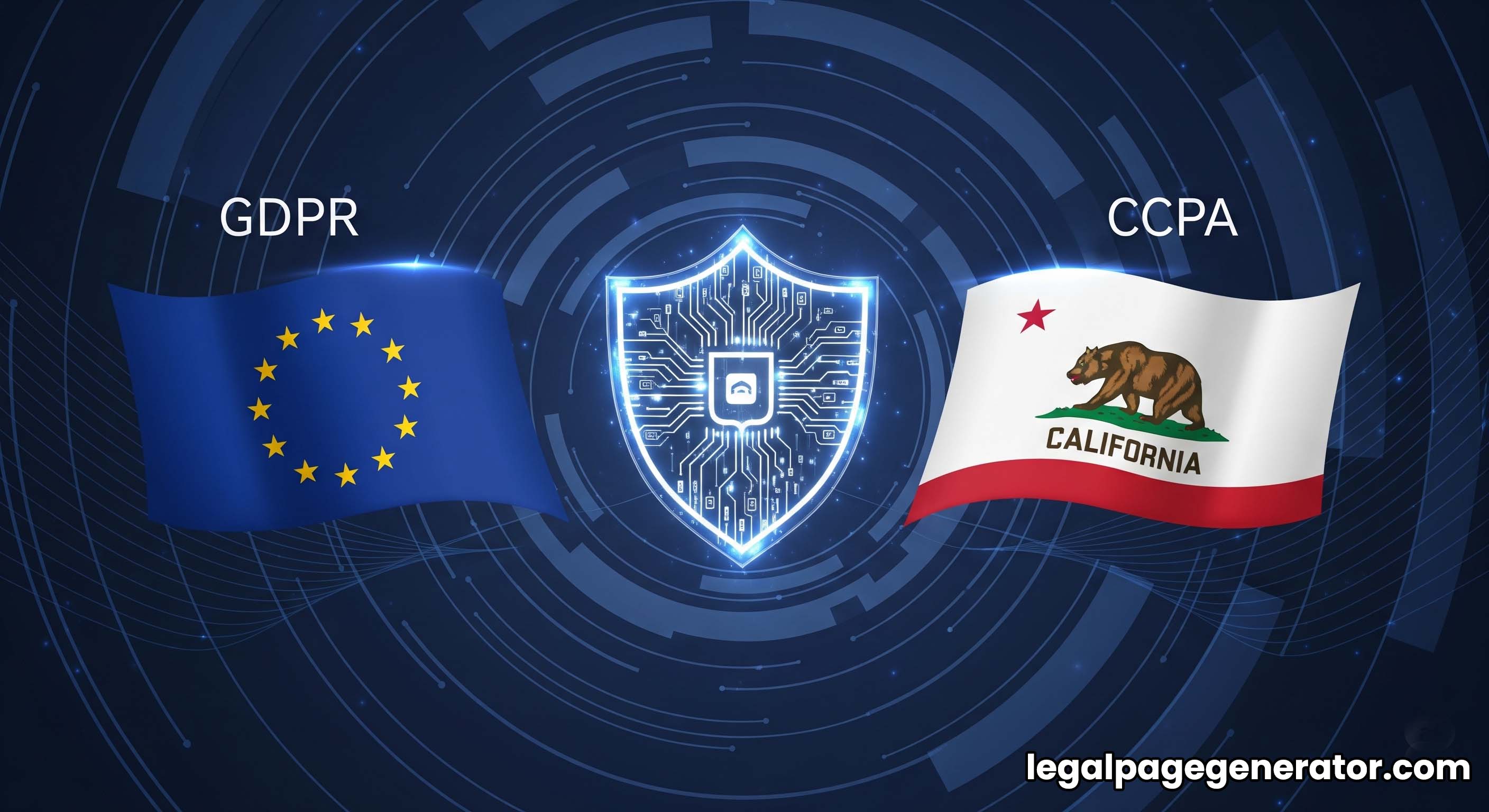If you run a blog that gets visitors from around the world, you've likely heard the acronyms GDPR and CCPA. These landmark data privacy laws have reshaped how websites handle user information. For many bloggers, they can seem complex, but non-compliance can lead to hefty fines and loss of user trust.
This article will demystify these two important laws. We'll break down who they apply to, their key differences, and the practical steps you need to take to ensure your blog is compliant.
Table of Contents
What is the GDPR?
The General Data Protection Regulation (GDPR) is a law from the European Union. It applies to any website that processes the personal data of individuals located within the EU, regardless of where the website itself is based. Its core principle is "opt-in" consent, meaning you must get clear consent from users *before* you can collect their data (e.g., for cookies).
What is the CCPA?
The California Consumer Privacy Act (CCPA) is a state-wide data privacy law in California. It applies to for-profit businesses that collect the personal information of California residents and meet certain thresholds (e.g., handling data of 100,000+ residents). Its core principle is "opt-out," giving users the right to tell businesses not to sell or share their personal information.
Key Differences: GDPR vs. CCPA
| Feature | GDPR (EU) | CCPA (California) |
|---|---|---|
| Scope | Applies to any site with EU visitors. | Applies to larger businesses with California visitors. |
| Consent Model | Opt-In (must get consent before collecting). | Opt-Out (must give users the right to stop data sharing). |
Practical Compliance Steps for Bloggers
Complying with both laws might seem daunting, but you can cover most of your bases by following the strictest rules (usually from the GDPR).
- Have a Comprehensive Privacy Policy: This is the most critical step. Your privacy policy must be detailed and explain what data you collect, why you collect it, and how users can exercise their rights.
- Implement a Cookie Consent Banner: Use a cookie banner that allows users to accept or reject non-essential cookies. This satisfies the GDPR's opt-in requirement.
- Review Your Data Collection: Understand what data you are actually collecting from contact forms, analytics, and advertising partners. Only collect what you truly need.
- Set Up a Process for Data Requests: Have a clear method for users to request access to or deletion of their data, as mentioned in your privacy policy.
The foundation of your compliance strategy is a robust Privacy Policy. If you're unsure where to start, the Legal Page Generator can help you create a detailed policy that addresses these key requirements.
